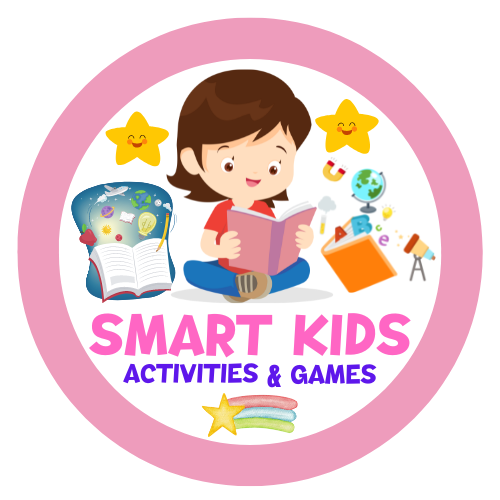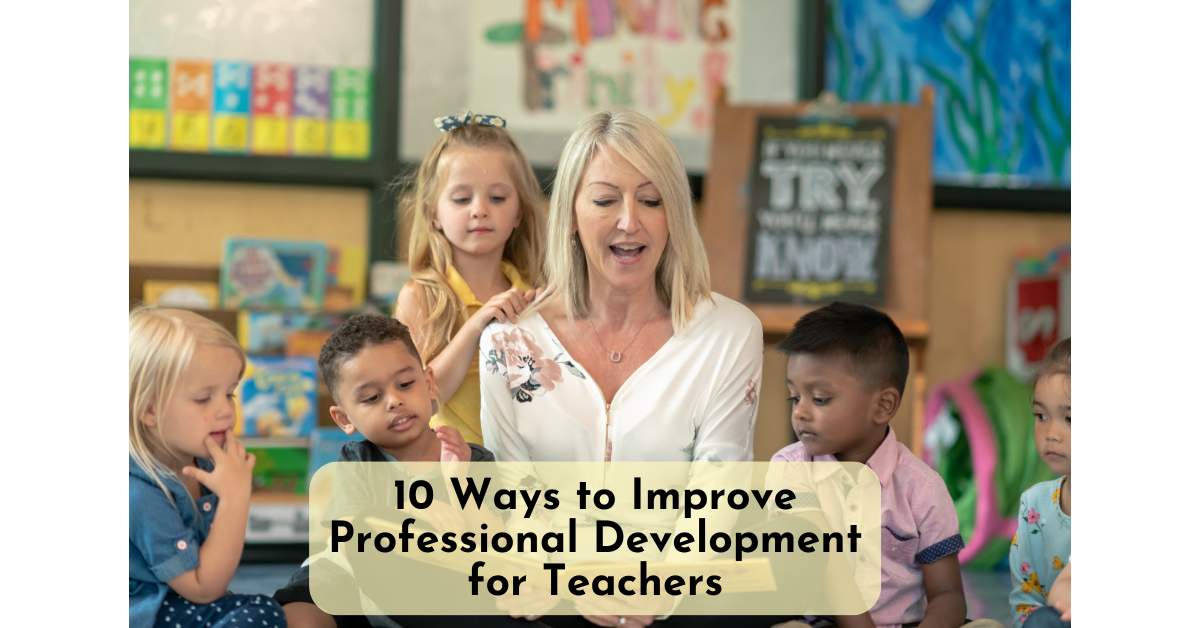Key Takeaways
- Hone specific skills to enhance teacher effectiveness.
- Offer ongoing learning opportunities through continuous education.
- Leverage technology to support instructional practices.
- Build positive teacher-student relationships for a supportive learning environment.
- Seek feedback from administrators, peers, and students to identify areas for growth.
The Importance of Professional Development for Teachers
Professional development for teachers is key to their continuing education, growth, and learning. It provides invaluable development opportunities for educators to expand their knowledge and skills, allowing them to stay updated with new standards and instructional strategies. By participating in effective professional development programs, teachers can enrich their teaching practice and provide enhanced learning experiences for their students. Continuing education for educators is vital in the ever-evolving field of education. Through professional development, teachers have access to a wide range of development opportunities, including workshops, conferences, webinars, and online courses. These resources enable teachers to deepen their expertise in various domains, such as curriculum development, assessment strategies, instructional technologies, and pedagogical approaches. Teacher growth and learning are continuous processes that benefit from ongoing professional development. By engaging in meaningful development activities, educators can refine their teaching skills, explore innovative teaching methods, and develop a deep understanding of their subject matter. This continuous learning not only enhances their effectiveness in the classroom but also contributes to their overall professional growth. Professional development also offers valuable networking opportunities for teachers. By connecting with fellow educators and experts in their field, teachers can share experiences, exchange ideas, and collaborate on educational projects. These networking connections can foster a supportive community of educators, where they can learn from one another and collectively strive for excellence.Effective professional development is not just about acquiring new knowledge and skills; it is about creating a culture of lifelong learning and continuous improvement. It empowers teachers to be agents of change in their classrooms, schools, and communities.The impact of professional development on student learning outcomes is well-documented. Research consistently shows that effective professional development positively influences student achievement and comprehension. When teachers engage in development activities that align with their instructional needs and student populations, they can implement evidence-based strategies and instructional approaches that lead to enhanced student engagement and success.
Benefits of Professional Development for Teachers:
- Enhanced teaching skills and instructional strategies
- Increased subject matter expertise
- Improved student learning outcomes
- Support for teacher professional growth
- Opportunities for networking and collaboration
| Study | Impact of Professional Development |
|---|---|
| Smith et al. (2016) | Significant improvement in student achievement in math |
| Johnson & Johnson (2018) | Higher levels of student engagement and critical thinking skills |
| Williams & Brown (2020) | Positive impact on reading comprehension and vocabulary development |
Strategies for Effective Professional Development
To enhance teacher skills and promote teacher professional growth, it is crucial to implement effective strategies in professional development programs. These strategies focus on honing classroom teaching skills, developing subject matter expertise, addressing specific challenges, encouraging networking and collaboration, leveraging technology, and creating opportunities for feedback and discussion. By adopting these strategies, educators can enhance their effectiveness in the classroom and continuously improve their teaching practice. Honing Classroom Teaching Skills:- Provide workshops and training sessions that focus on specific teaching techniques and strategies.
- Encourage teachers to observe and learn from experienced educators through mentorship programs.
- Offer opportunities for teachers to reflect on their teaching practice and engage in self-assessment.
- Facilitate subject-specific training sessions and workshops to deepen teachers’ knowledge and understanding.
- Encourage participation in professional organizations and communities focused on specific subjects.
- Provide access to resources and materials that support subject matter expertise.
- Identify common challenges faced by teachers and design targeted professional development programs to address them.
- Offer support and resources to help teachers overcome specific obstacles in the classroom.
- Encourage collaboration among teachers to share solutions and best practices.
- Organize networking events and conferences where teachers can connect with peers and share insights.
- Foster collaboration through team teaching, co-planning, and interdisciplinary projects.
- Facilitate online communities and forums for educators to collaborate and share ideas.
- Provide access to online resources, webinars, and virtual workshops.
- Introduce technology integration training to enhance digital literacy skills.
- Encourage the adoption of educational technology tools and platforms.
- Establish a culture of open communication and encourage teachers to seek feedback regularly.
- Organize regular meetings and discussions to facilitate the exchange of ideas and experiences.
- Implement peer coaching programs to provide structured feedback and support.
| Strategy | Description |
|---|---|
| Honing Classroom Teaching Skills | Provide targeted training sessions and opportunities for reflection. |
| Developing Subject Matter Expertise | Facilitate subject-specific training and access to resources. |
| Addressing Specific Challenges | Design programs to tackle common obstacles in the classroom. |
| Encouraging Networking and Collaboration | Create platforms for educators to connect and share insights. |
| Leveraging Technology | Integrate technology tools and provide digital literacy training. |
| Creating Opportunities for Feedback and Discussion | Foster open communication and peer coaching programs. |
The Role of Technology in Professional Development
Technology plays a significant role in enhancing professional development for teachers. It offers a wide range of resources and opportunities for educators to enhance their skills, connect with experts and peers, and explore innovative teaching methods. With the rapid advancement of technology in education, it is crucial for teachers to stay updated and leverage technology in their professional development. One of the key ways technology supports professional development is through technology-themed training programs. These programs focus on equipping teachers with the necessary technological skills and strategies to effectively integrate technology into their classrooms. By participating in these programs, teachers can enhance their technological literacy and gain valuable insights into using technology to support student learning.Examples of Technology-Themed Professional Development Programs:
By embracing technology in professional development, teachers can expand their teaching repertoire, foster a more engaging learning environment, and prepare students for the demands of the digital age.
- The Tech Savvy Teacher: This program offers hands-on training and workshops to help teachers develop their technological skills. Teachers learn how to effectively use educational apps, online resources, and digital tools to enhance student engagement and learning.
- Digital Literacies for the 21st Century Classroom: This program focuses on developing teachers’ digital literacy skills to create a learner-centered classroom environment. It covers topics such as digital citizenship, online collaboration, and media literacy.
| Benefits of Technology in Professional Development |
|---|
| Access to a wide range of educational resources and materials. |
| Opportunities for collaboration and networking with experts and peers. |
| Enhanced ability to differentiate instruction and cater to diverse learning styles. |
| Increased student engagement and motivation through interactive learning experiences. |
| Preparation of students for the digital era and future career opportunities. |
Building Positive Teacher-Student Relationships
Positive teacher-student relationships are crucial for student success and teacher effectiveness. When teachers establish positive connections with their students, it promotes a supportive and engaging learning environment. Building these relationships involves several strategies:- Setting Clear Expectations: Clearly communicating expectations helps students understand what is expected of them and creates a structured learning environment.
- Getting to Know Each Student: Taking the time to understand each student individually allows teachers to tailor their instruction to meet their unique needs and interests.
- Fostering a Positive Social Climate: Creating a positive and inclusive classroom environment promotes cooperation, empathy, and respect among students.
- Giving Meaningful Feedback: Providing timely and constructive feedback helps students understand their strengths and areas for improvement.
- Involving Parents in the Education Process: Building a partnership with parents enhances communication and collaboration, leading to better student outcomes.
| Benefits of Positive Teacher-Student Relationships | Strategies for Building Positive Relationships |
|---|---|
|
|
Continuous Learning and Subject Matter Expertise
Continuous learning is a critical aspect of effective teacher training and professional growth. Teachers must continuously update their knowledge and skills to stay current with changing curriculum standards and pedagogical approaches. By engaging in continuous learning, educators can enhance their subject matter expertise and provide the most relevant and effective instruction to their students. There are several strategies that teachers can employ to facilitate continuous learning and develop subject matter expertise:1. Enroll in Continuing Education Courses
Taking part in formal continuing education programs, such as workshops, webinars, and seminars, allows teachers to deepen their understanding of specific subjects and gain new insights into instructional strategies. These courses provide opportunities for teachers to engage with experts in their field, exchange ideas with peers, and learn about the latest research and practices.2. Join Professional Organizations
Being a member of professional organizations related to their subject area can provide teachers with access to a wealth of resources, including journals, newsletters, and conferences. These organizations often offer specialized training and networking opportunities that can further contribute to subject matter expertise.3. Refresh Lesson Plans
Regularly reviewing and updating lesson plans enables teachers to incorporate new content and teaching methods. This process allows educators to align their instruction with current educational standards and research-based practices, ensuring that their teaching remains relevant and effective.4. Seek Feedback from Colleagues and Students
Actively seeking feedback from colleagues and students can provide valuable insights into the effectiveness of teaching methods and content delivery. By encouraging open communication and feedback, teachers can identify areas for improvement and make necessary adjustments in their instructional practices.5. Engage in Reflective Practice
Engaging in reflective practice involves critically analyzing teaching practices and experiences to identify strengths, weaknesses, and opportunities for growth. This self-reflection allows teachers to evaluate their subject matter expertise and identify areas for professional development. Continuous learning and subject matter expertise are crucial elements of effective teacher training and professional growth. By actively engaging in continuous learning and seeking opportunities to develop their subject matter expertise, teachers can constantly improve their instructional practices and provide high-quality education to their students.The Benefits of Networking for Teachers
Networking events provide valuable opportunities for teacher professional growth and development. These events allow educators to expand their professional network, gain insights from peers, and potentially find mentors who can offer guidance and support. By building relationships with other educators, teachers can foster a sense of community and collaboration that can lead to new ideas, innovative teaching strategies, and the sharing of best practices. Networking events specifically designed for teachers, such as conferences and workshops, offer a focused environment for professional development. These events feature presentations by experts in the field, interactive workshops, and panel discussions that address relevant topics and challenges faced by educators. Attending these events can provide teachers with valuable insights, inspiration, and practical strategies that they can implement in their classrooms. One of the key benefits of networking events is the opportunity for teachers to connect with like-minded professionals who share their passion for education. Through these connections, teachers can engage in meaningful discussions, exchange ideas, and collaborate on joint projects. Networking events can help teachers expand their perspectives, challenge existing beliefs, and explore innovative approaches to teaching and learning.“Attending networking events has been a game-changer for my professional growth as a teacher. The connections I’ve made have not only inspired me but have also provided me with invaluable support and resources. Networking with other educators has opened doors to new opportunities and has helped me stay motivated and passionate about my work.”In addition to the exchange of ideas, networking events also offer opportunities for teachers to gain insights from seasoned educators and experts in the field. Keynote speakers, workshop facilitators, and panelists often share their experiences, research, and innovative practices, providing teachers with valuable knowledge and strategies that they can adapt to their own classrooms. Finally, networking events can serve as a platform for showcasing teacher achievements and contributions. Teachers can present their own research, projects, and success stories, gaining recognition and validation for their hard work and dedication. This recognition can boost their confidence and motivation, driving them to further excel in their teaching practice.
Benefits of Networking for Teachers:
- Expanded professional network
- Insights from peers and mentors
- New ideas and innovative teaching strategies
- Sharing of best practices
- Opportunities for collaboration and joint projects
- Access to expert knowledge and research
- Recognition and validation for achievements
| Networking Event | Location | Date |
|---|---|---|
| Annual Educators Conference | Chicago, IL | October 15-17, 2022 |
| National Teacher Symposium | Orlando, FL | June 25-27, 2022 |
| Education Technology Expo | San Francisco, CA | March 12-14, 2022 |
The Importance of Feedback for Teacher Improvement
Feedback plays a crucial role in the continuous improvement of teachers. Seeking feedback from administrators, peers, and students can provide valuable insights that help teachers identify areas for growth and development. By receiving constructive feedback, teachers can make adjustments to their teaching methods, enhance classroom strategies, and ultimately improve their overall effectiveness. Constructive feedback offers a fresh perspective and can highlight areas of strength as well as areas that need improvement. It allows teachers to reflect on their teaching practices, identify blind spots, and implement positive changes that lead to better student outcomes. As Albert Einstein once said, “Feedback is the breakfast of champions.” And he couldn’t have been more right. Feedback provides teachers with the information they need to refine their instructional approaches, adapt to the ever-evolving needs of their students, and continuously enhance their teaching skills. Feedback can come from various sources, including:- Administrators who observe classroom instruction and provide professional guidance.
- Peers who can offer insights, share best practices, and provide suggestions for improvement.
- Students, who can provide valuable feedback through surveys, assessments, and open discussions.
Case Study: The Impact of Feedback on Teacher Growth
“Receiving feedback from my students has been a game-changer for my teaching. Their honest opinions and insights have helped me understand what works well in the classroom and what I can do better. It’s like having a mirror that shows me my strengths and weaknesses. By using their feedback to guide my instructional decisions, I’ve been able to continually refine my teaching methods and provide a richer learning experience for my students.” – Sarah Thompson, 5th grade teacher
Inclusion and Diversity in the Classroom
Recognizing and appreciating the diversity in the classroom is crucial for effective teaching. Inclusive classrooms that embrace different learning styles, cultural backgrounds, and individual needs create an environment that fosters engagement and learning for all students. By acknowledging and valuing the unique strengths and perspectives of each student, teachers can create a supportive and inclusive space that enhances student outcomes.The Importance of Differentiated Instruction
One key aspect of promoting inclusivity in the classroom is through differentiated instruction. This approach recognizes that students have diverse learning styles and abilities, and tailors teaching methods and materials to meet their individual needs. By presenting content and activities in various formats and providing multiple pathways for students to demonstrate their understanding, teachers can accommodate different learning styles and ensure that all students can access and engage with the curriculum.Building Positive Teacher-Student Relationships
Positive teacher-student relationships are essential for creating an inclusive classroom atmosphere. When teachers develop strong connections with their students, they gain a deeper understanding of their backgrounds, experiences, and learning styles. This enables teachers to provide personalized support and create a sense of belonging and acceptance. By nurturing these relationships, teachers send a powerful message that all students are valued and respected.The Value of Cultural Responsiveness
Cultural responsiveness is another important aspect of inclusion in the classroom. Teachers should strive to incorporate culturally relevant materials, examples, and perspectives into their instruction. This not only helps students feel represented and included, but it also fosters a deeper understanding and appreciation for different cultures. By embracing diversity and honoring cultural differences, teachers can create a sense of belonging and promote a positive learning experience for all students.“Education is not the filling of a pail, but the lighting of a fire.” – William Butler Yeats
Promoting Collaborative Learning
Collaborative learning activities can play a significant role in fostering inclusivity in the classroom. By encouraging students to work together on projects, discuss ideas, and share their perspectives, teachers create opportunities for diverse voices to be heard and respected. Collaboration allows students to learn from one another, appreciate different viewpoints, and develop essential teamwork and communication skills.Creating a Safe and Supportive Environment
A safe and supportive classroom environment is fundamental for inclusion. Teachers should establish clear expectations and rules that promote respect and empathy. They should also address instances of bias, discrimination, or exclusion promptly and effectively. By creating a safe space where students feel comfortable expressing themselves, asking questions, and making mistakes, teachers can foster a positive learning environment that celebrates diversity.| Benefits of Inclusive Classrooms | Strategies for Promoting Inclusivity |
|---|---|
| 1. Enhanced academic performance | 1. Implement differentiated instruction |
| 2. Increased self-esteem and confidence | 2. Build positive teacher-student relationships |
| 3. Improved social skills and empathy | 3. Incorporate cultural responsiveness |
| 4. Preparation for a diverse society | 4. Promote collaborative learning |
| 5. Reduced bullying and discrimination | 5. Create a safe and supportive environment |
Leveraging Parent Involvement for Student Success
Engaging parents in the education process can have a significant impact on student success. When parents are actively involved, students tend to have higher academic achievement, improved attendance, increased motivation, and better behavior in school. By creating a strong partnership between educators and families, we can create a supportive and collaborative learning environment that promotes positive student outcomes.Building Strong Relationships with Parents
Building strong relationships with parents is the foundation for effective parent involvement. Teachers can establish trust and rapport by regularly communicating with parents, listening to their concerns, and addressing any issues in a timely manner. By fostering open lines of communication, parents feel valued and involved in their child’s education, leading to a stronger commitment to supporting and reinforcing classroom objectives.Setting Clear Expectations
Clear expectations are key to successful parent involvement. Teachers should communicate academic goals, behavior expectations, and classroom policies to parents at the beginning of the school year. By providing a clear roadmap, parents can align their efforts at home with what is being taught in the classroom, creating consistency and reinforcing learning objectives.Regular Communication
Regular communication between teachers and parents is essential to keep parents informed and engaged in their child’s education. This can be done through newsletters, emails, parent-teacher conferences, and other forms of communication. By sharing updates on student progress, upcoming events, and ways parents can support learning at home, teachers empower parents to actively participate in their child’s education.Volunteering in the Classroom
Parent volunteers can make a significant impact in the classroom. By offering their time and skills, parents can support teachers in various activities such as organizing class parties, assisting in field trips, or providing extra assistance to students who need it. This not only lightens the teacher’s workload but also demonstrates to students the importance of community and collaboration in the learning process.| Benefits of Parent Involvement | Strategies for Parent Involvement |
|---|---|
|
|
Conclusion
Improving professional development for teachers is crucial for their growth and the success of their students. By implementing effective improvement tactics and utilizing various teaching methods, educators can enhance their teaching skills and create a more engaging learning environment. One key improvement tactic is breaking down complex concepts into smaller, more manageable parts. This approach helps students grasp difficult concepts and promotes better understanding and retention. Additionally, leveraging technology in the classroom can provide teachers with valuable resources and innovative teaching methods to support student learning. Building positive relationships with students, colleagues, and parents is another essential teaching method. By fostering strong connections, teachers create a supportive and collaborative environment, encouraging student engagement and success. Continuous learning through professional development courses and seeking feedback from administrators, colleagues, and students also play a vital role in enhancing teaching skills. Furthermore, networking opportunities enable teachers to connect with peers, share best practices, and gain valuable insights. Involving parents in the education process strengthens the home-to-school connection, boosts student outcomes, and fosters a sense of community in the classroom.FAQ
Why is professional development important for teachers?
Professional development helps teachers enhance their skills, expand their knowledge, stay updated with new standards, and support their professional growth.
How can professional development programs be more effective?
Professional development programs can be more effective by focusing on honing teaching skills, addressing specific challenges, encouraging collaboration, leveraging technology, and providing ongoing training.
How does technology play a role in professional development for teachers?
Technology allows teachers to access resources, connect with experts and peers, explore innovative teaching methods, and enhance their technological skills.
What are the benefits of building positive teacher-student relationships?
Building positive teacher-student relationships enhances communication, trust, and collaboration, leading to student success and teacher effectiveness.
How can teachers continuously improve their skills and subject matter expertise?
Teachers can continuously improve by enrolling in continuing education courses, joining professional organizations, refreshing lesson plans, and seeking feedback from colleagues and students.
How does networking benefit teachers in their professional development?
Networking events provide opportunities for teachers to expand their professional network, gain insights from peers, and potentially find mentors for professional growth.
Why is feedback important for teacher improvement?
Seeking feedback from administrators, peers, and students provides valuable insights, helps identify areas for growth, and improves overall teaching effectiveness.
How can teachers promote inclusion and diversity in the classroom?
Teachers can promote inclusion and diversity by embracing different learning styles, cultural backgrounds, and individual needs to create an inclusive and engaging learning environment for all students.
How does parent involvement impact student success?
Involving parents in the education process fosters a supportive and collaborative learning environment, reinforces classroom objectives, and improves student outcomes.
How can professional development for teachers be improved?
Professional development for teachers can be improved by implementing strategies such as breaking down concepts, leveraging technology, building relationships, continuous learning, seeking feedback, networking, and involving parents.
Download free activities and teaching resources Click Here
You may also be interested in
Exploring Modern Teacher Aids: Enhancing Classroom Success
Top 10 Simple Classroom Organization Ideas for Elementary Teachers
Mastering Education: Effective Classroom Management Strategies for New Teachers
Fun and Engaging Methods: How to Teach Maths in an Interesting Way
Effective Tips on How to Promote Literacy in Early Childhood
Empowering Future Learners with Early Childhood Education
Source Links
- https://pce.sandiego.edu/10-strategies-for-effective-teacher-professional-development-with-examples/
- https://pce.sandiego.edu/10-tips-to-improve-your-teaching-skills/
- https://www.simplek12.com/professional-development/skills-for-teachers/







